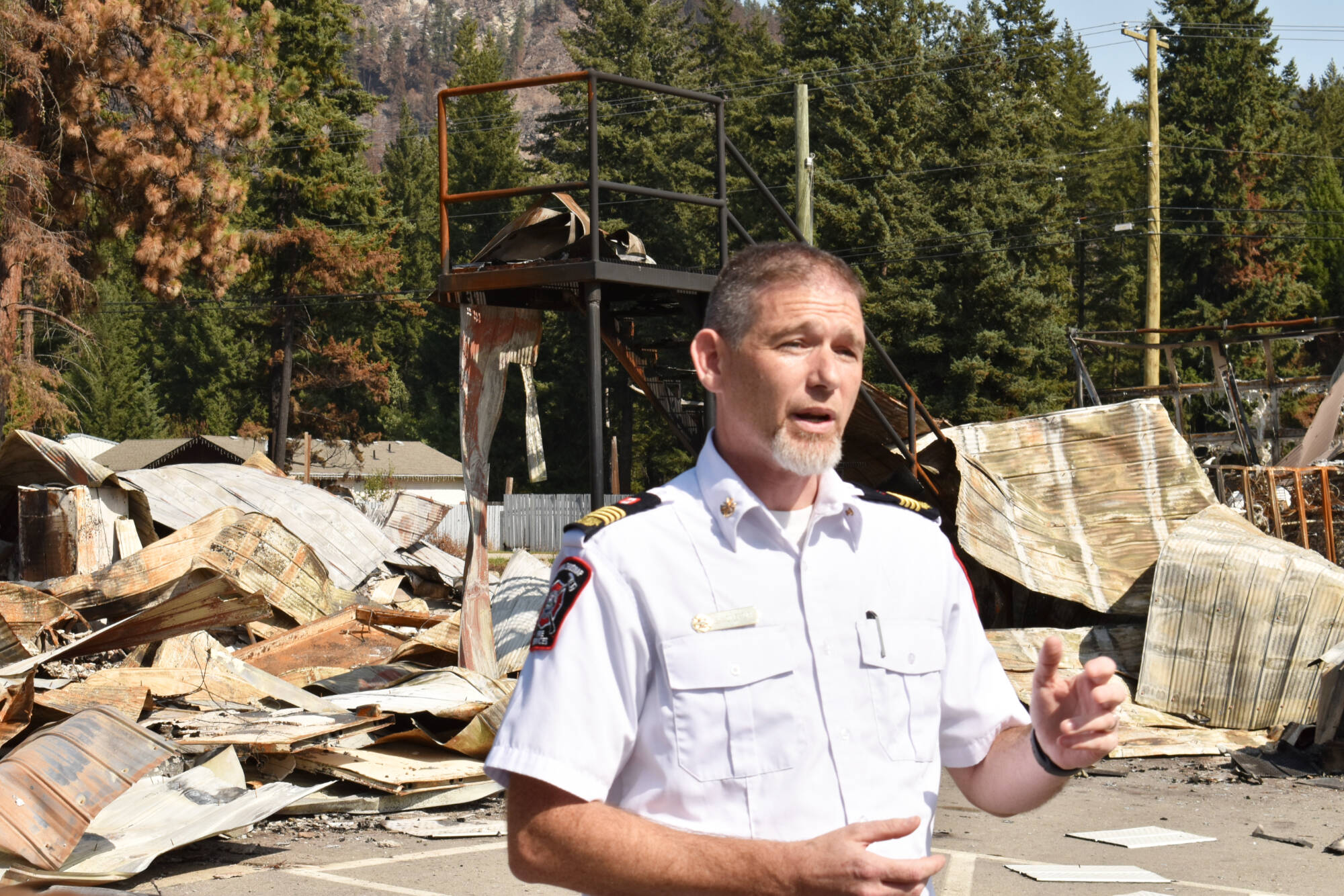By Barb BrouwerContributor
The 2023 Bush Creek East wildfire that devastated B.C.’s North Shuswap moved with lightning speed.
Recovery however, is estimated to take up to three years or more.
Michael Higgins is director of Climate Readiness and Community Recovery for Colliers Project Leaders Recovery Team, hired by the Columbia Shuswap Regional District (CSRD) to assist with recovery efforts.
“Recovery is a long-term prospect and you’ll see some areas that might not have previously been considered a typical recovery project based on scope scale and complexity,” he said.
Colliers has presented government with a post-event expenditure authorization review to provide recommendations on how best to move forward in the future.
Higgins said the recovery working group is approaching the process on three fronts: a social perspective that focuses on people’s unmet needs; an infrastructure perspective that focuses on redevelopment and rebuilding; and on a development services perspective, focusing on permitting and solid waste management.
“Completed tasks include transitioning from an emergency operations centre ‘emergency tempo’ of activity around the wildfire to a more recovery-based tempo and recovery based actions,” said Higgins, noting primary tasks have been identified, and a governance model approved.
Some rebuilding will likely be complicated by new heritage and riparian legislation that wasn’t in place when many structures were built. Work is being done to streamline the process so residents are not held up unduly.
Higgins says work continues in the Wellness and Housing section, the largest of the tasks, with some residents still receiving emergency social services.
An online survey gave residents affected by the wildfire the opportunity to share their thoughts, and interviews have been held with emergency response stakeholders to capture lessons learned from the wildfire.
Read more: Footage of West Kelowna, Shuswap wildfires sought for research project
Read more: ‘There’s no quick answer’: Shuswap community questions wildfire officials
Higgins said upcoming tasks include work around around property assessments and tax losses, a policy on building and temporary permits, critical infrastructure insurance review and fire hall replacement.
On the environmental side, work is focusing on debris management: how much local landfills can expect to receive, how much of the debris is contaminated, and how to make sure landfills continue to meet provincial regulations.
Residents will receive Ministry of Environment debris testing guidance and support. Guidelines for riparian areas will be forthcoming, including steps tied to geotechnical hazard assessments conducted in early fall.
Communication with residents is being conducted with monthly public updates and social media stories. An open house is being planned.
“No, it’s not a template,” Higgins said. “Our primary role is to come into communities and organizations, get a feel for what the circumstance has been and develop a structure that meets their needs.
“This is brand new for local government in B.C. and is designed to be able to bolt onto the side of a local government, whether regional district or municipalities rather than create another organization.”

